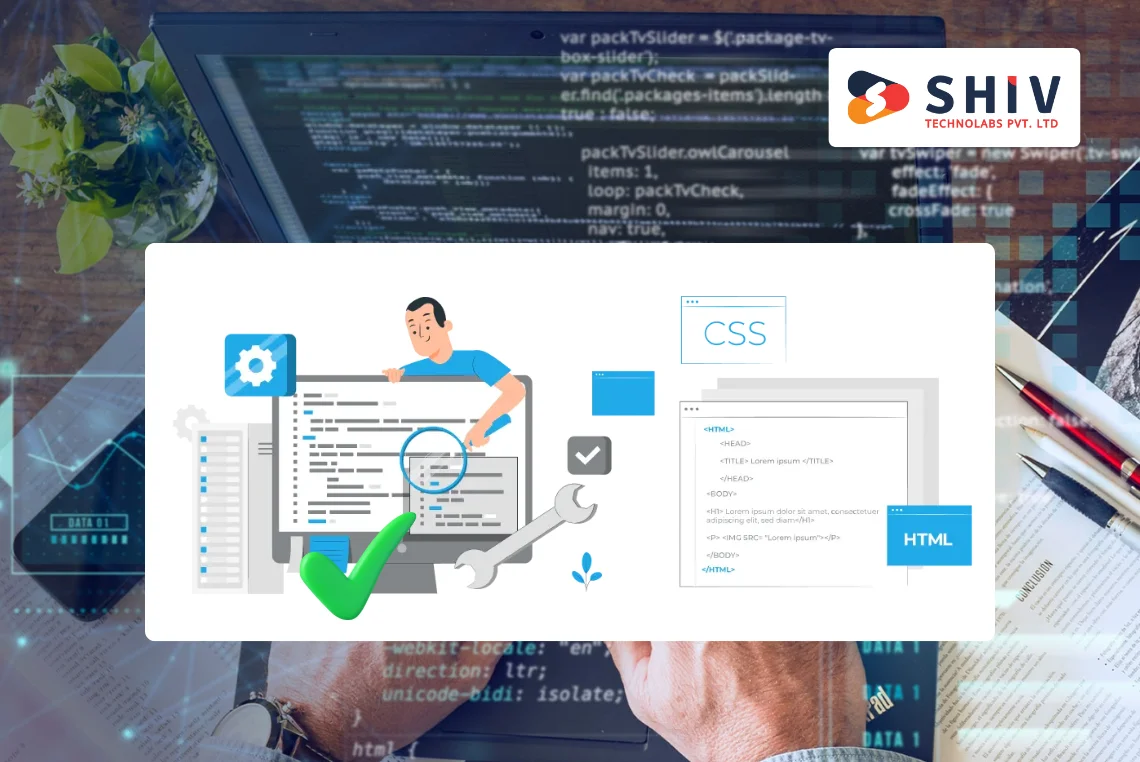Table of Contents
Let’s be real, in today’s super-speedy digital world, building software is a big deal. It’s not just about coding; you need to plan properly, get it done right, and keep it running smoothly. Think of the Software Development Life Cycle (SDLC) as a handy guide that helps you build good, efficient software step by step, from when you first have an idea to when it’s all finished.
Knowing the life cycle of software development is essential for businesses, developers, and software development Consultants to create reliable and scalable software solutions. This guide provides a comprehensive look into SDLC software, its phases, and its importance in modern software development.
What is the Software Development Life Cycle (SDLC)?
The Software Development Life Cycle (SDLC) is a systematic process that guides the development of software applications from the initial idea to deployment and maintenance. It Consists of a series of well-defined stages, ensuring that the final product meets user requirements, operates efficiently, and remains cost-effective.
Following a structured software development life cycle helps organizations minimize risks, reduce development costs, and improve overall product quality. Whether you’re a software engineer, project manager, or business analyst, understanding the phases of software development life cycle is essential for delivering successful projects.
# Importance of the Software Development Life Cycle
The life cycle of software development provides several benefits:
- Efficiency and Cost-Effectiveness: A structured SDLC software approach minimizes unnecessary rework and reduces costs.
- Improved Quality: Each stage focuses on quality control, resulting in reliable software.
- Better Risk Management: Identifying potential issues early prevents major failures.
- Better Collaboration: Proper documentation and organized processes facilitate improved teamwork.
Organizations that follow a well-defined software development life cycle can deliver high-quality products while maintaining agility in software development.
Software Development Life Cycle Phases

The software development life cycle phases form the backbone of SDLC software, ensuring a step-by-step approach to building robust applications. These phases are:
1. Planning and Requirement Analysis
The first phase of the life cycle of software development is planning. This stage involves:
- Identifying the project scope and objectives
- Gathering business and technical requirements
- Conducting feasibility studies
- Estimating costs and resources
Software development Consultants play a crucial role in this phase by assessing business needs and recommending optimal solutions.
2. System Design
Once the requirements are defined, the next step is designing the system. This phase includes:
- Creating software architecture and system models
- Designing databases, user interfaces, and workflows
- Defining hardware and software requirements
Proper system design ensures a clear blueprint for the next stages of the software development life cycle phases.
3. Implementation (Coding & Development)
This is the phase where actual coding takes place. Developers write the source code based on the design documents. This stage involves:
- Selecting appropriate programming languages and frameworks
- Writing clean, efficient, and secure code
- Following coding standards and best practices
- Conducting preliminary testing
SDLC software methodologies such as Agile, Waterfall, and DevOps influence how development is executed.
4. Testing and Quality Assurance
Before deployment, thorough testing is required to ensure the software functions correctly. This stage includes:
- Unit testing, integration testing, and system testing
- Identifying and fixing bugs
- Ensuring performance, security, and usability
As a critical element of the phases of software development life cycle, testing is indispensable for delivering a bug-free and high-performing application.
5. Deployment and Implementation
Once testing is complete, the software is deployed for users. This phase involves:
- Installing the application in the production environment
- Performing final testing and troubleshooting
- Training users and stakeholders
Software development Consultants often assist organizations in this phase, ensuring smooth deployment and minimal downtime.
6. Maintenance and Support
The final phase of the software development life cycle phases involves maintaining and improving the software post-deployment. This includes:
- Fixing bugs and security vulnerabilities
- Adding new features and enhancements
- Ensuring software remains compatible with evolving technologies
Regular maintenance is important as it keeps software updated and adaptable to changing user needs.
Common SDLC Software Models
There are several SDLC software models, each with unique characteristics:
1. Waterfall Model
The Waterfall Model is a linear, sequential approach where phases are completed in a strict order. It’s most suitable for projects with stable, unchanging requirements.
Pros
- Clear structure – Well-documented and easy to follow.
- Easy to manage – Suitable for small projects with fixed requirements.
Cons
- Inflexible – Difficult to incorporate changes once development begins.
- Late error detection – Bugs are found late, increasing the cost of fixes.
2. Agile Model:
The Agile Model is an iterative approach where development occurs in small, incremental cycles called sprints. It is widely used for projects requiring frequent updates and user feedback.
Pros
- Highly flexible – Allows changes based on evolving requirements.
- Faster delivery – Continuous iterations enable quicker releases.
Cons
- Resource-intensive – Requires experienced developers and testers.
- Difficult cost estimation – Frequent changes make budgeting challenging.
3. DevOps Model
The DevOps Model integrates development and operations to enable continuous integration, delivery, and monitoring. It focuses on automation, collaboration, and rapid deployment.
Pros
- Faster software releases – Continuous integration ensures quick updates.
- Better stability – Constant monitoring improves performance and reliability.
Cons
- Complex setup – Requires advanced tools and skilled teams.
- Security risks – Frequent updates may introduce vulnerabilities.
4. V-Model
The V-Model is an extension of the Waterfall Model, where testing is conducted at every stage. It emphasizes early defect detection to improve software quality.
Pros
- Early bug detection – Reduces the risk of costly fixes later.
- Structured and systematic – Clearly defined stages for development and testing.
Cons
- Rigid structure – Not suitable for projects with evolving requirements.
- Time-Consuming – Extensive testing increases development time.
5. Spiral Model
The Spiral Model is a risk-driven approach that combines iterative development with continuous risk assessment, making it ideal for complex and high-budget projects.
Pros
- Good for risk management – Identifies and mitigates risks early.
- Customizable – Adaptable to different types of projects.
Cons
- Expensive – Requires significant time and resources.
- Difficult to manage – Needs expert handling due to its complexity.
Role of Software Development Consultants in SDLC

Software development Consultants provide expert guidance throughout the software development life cycle phases. Their responsibilities include:
- Analyzing business needs and recommending suitable SDLC methodologies
- Assisting in system design and architecture
- Ensuring software meets security and compliance standards
- Providing project management and quality assurance insights
Their expertise helps businesses optimize resources and achieve successful project outcomes.
Conclusion
The Software Development Life Cycle (SDLC) is essential for building high-quality, cost-effective software solutions. By following a structured approach, businesses can minimize risks and enhance efficiency. Shiv Technolabs helps organizations implement the right SDLC model, ensuring scalable, robust software solutions that align with business goals and industry standards.






















